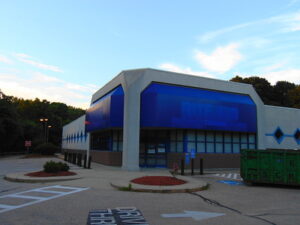Yesterday, I wrote about Oakland Community College’s plan to close its Highland Lakes campus. The property is a 155-acre parcel, which has 307,400 square feet of facilities. The closure is part of OCC’s plan to reduce its footprint. The school will start moving academic programs to other campuses this fall.
Currently, OCC is the largest of Michigan’s community colleges from a facilities standpoint. OCC manages 2.13M square feet of space across five campuses. Unfortunately, its enrollment has shrunk by more than half, and it doesn’t appear that students will be flooding back anytime soon.
OCC will focus on remodeling its remaining campuses to support new academic programs. Presumably, some of the money from the sale of Highland Lakes, as well as the sale of the district’s offices, will reduce (if only slightly) the cost of the work at OCC’s remaining four campuses.
Reducing the size of the campus footprint is key to reducing costs overall. From OCC’s current capital outlay plan, the college estimates that it has a maintenance backlog of about $150M. OCC isn’t going to extinguish its maintenance debt solely by raising tuition. The school would need to collect more than $525 per credit hour of instruction it delivered in 2022 to recover that kind of money.
And, of course, community colleges won’t get any help from the State of Michigan to reduce their neglected maintenance costs. The State has made it abundantly clear that it isn’t interested in rewarding neglect by paying to correct problems that arose because the institution failed to take proper care of their taxpayer-funded facilities. OCC may or may not get help from Oakland County taxpayers.
So, the sale of the Highland Lakes campus seems inevitable, and the property is most likely going to end up in the hands of developers.
Academic programs should be a community college’s highest spending priority
OCC also plans to develop new academic programs to attract more students. That’s also something the community colleges should have been doing all along. Program development is expensive. Occupational education programs are particularly costly.
That’s why it’s important to plan and develop these programs during the positive part of the economic cycle, and remodel the existing buildings as needed to support the new programs. When the economic cycle turns downward, the community college can have programs ready to go that will attract new students and help create and support new economic activity in the area.
But when the community college administration diverts “found money” to other priorities (like the fitness center, hiring a dozen Vice Presidents, $26M no-bid contracts, and making plans for a new hotel and meeting space on campus), it’s a double blow. Not only does the college lose the money that should have been spent on creating new instructional opportunities, but also the college still needs to build those new programs to attract students. And it needs to do this at or near the bottom of the economic cycle, when construction is expensive, quality is largely unavailable, money is tight, and demand for services is high.
It’s especially frustrating that the Board of Trustees – which should be evaluating administrative decisions for their benefits and risks to the taxpayers – not only green-lights this garbage, but also rewards the administration handsomely for this kind of poor decision-making.
There’s an election coming up in November. WCC desperately needs better Trustees than those who are currently sitting on the Board.
Photo Credit: Marco Verch , via Flickr









































